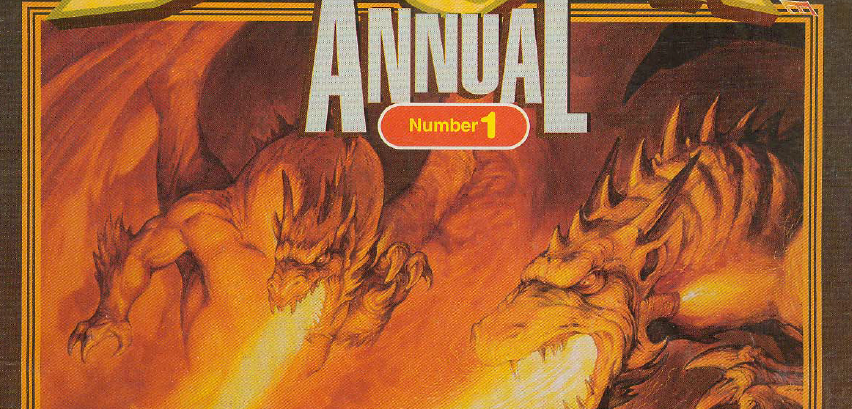The final Planescape release of 1996, and in fact the last release for Planescape they’d ever publish until the company was somewhat resurrected by Wizards of the Coast, is unique in that it’s mostly full of information about running a planar campaign, yet at the same time it’s not like the Planar Heroes piece we skipped just a little while back, because it’s not just crunch. I realize that many people reading these essays may not be familiar with what I mean by this term, and essentially it comes down to the idea that roleplaying games consist of two components: crunch, which is to say the actual game systems, and fluff, which is the story and lore and packaging that surround it. Often these elements mix together, but a lot of why Planescape is so easy to adapt into not just fifth edition Dungeons & Dragons but most any roleplaying game system is that what makes it interesting is all fluff. It’s all about the stories and ideas, while the rules systems surrounding them, while dated, are easily ignored.
But for all the tables and charts of A Handful of Keys: Portal Transportation in the Planescape Campaign, this is an article that barely touches on gameplay mechanics. Rather, its purpose is twofold: first, it’s there to offer advice on how to make portals work within a Planescape campaign, with particular focus on making them evocative. Second, and I suspect just as important for this being the essay included in Dragon Magazine Annual #1, a publication that gives space to all of TSR’s settings, it attempts to show just how easy it is to slip Planescape into an ongoing campaign. That’s right, even the tables and charts of Planescape are about how to do flavor and tone right, which is a lot of what makes it such a great setting.
Let’s be blunt, this piece isn’t necessary reading, and I nearly skipped covering it, especially since it deigns to acknowledge the Plane of Time, which, as I note whenever it or Chronomancer comes up, is rather stupid. What it is, though, is useful. The basic guidelines for how portals function should probably be rather rote to veteran Planescape DM’s, but how many of those are there, really? And at the same time, I appreciate tables of the sort that are included here for offering up ideas. I’m not really a person to roll and decide what the key for a journey to the Plane of Magma, but I would take a look at the list and go, “a stone lantern with a burning oil flame is a good idea, I’ll use that.” No they’re not necessary, and they hardly add anything concrete to the multiverse, but at the same time these lists and their accompanying article help with designing a planar campaign, which is something there isn’t much of in the rest of the setting. Monte Cook helped with this a bit in the Planewalker’s Handbook, but for those who passed that and the initial Campaign Setting by this is particularly worthwhile reading.
Beyond the charts of sample portal keys, there’s also examples for how this might work:
Leslie is bored by the challenges facing Lucius, her 4th-level paladin character, on the prime-material world of Toril, and she suggests to her DM that trying Planescape adventures might be exciting. The next gaming session begins with Lucius traveling through unfamiliar woodlands near his home, looking for a pleasant picnic spot. He finds an ancient, rune-covered dolmen, possibly, he thinks, an ancient druidic site. … As he passes through the archway, an interplanar portal is triggered by the hard-boiled egg Lucius has prepared for his lunch (Table E, roll 30). The portal destroys the egg, but Lucius will never realize that item was the portal key. With a flash of light and a crackle of released magical energy, Lucius emerges from the tiny henhouse (Table B, roll 5) behind Hundrake’s Poultry Shop, located in Sigil’s Market Ward (Table A, roll 801).
The article continues in this fashion, and while yes it does tell us about the portals and where their keys came from in the accompanying charts, really this is about explaining how to run a Planescape campaign. Lucius goes on to have various adventures in Hades, the Plane of Fire, and the Plane of Ash, with the essay’s final admonition being tht “careful use of portals and keys can add a distinctive quality to a campaign, but the manipulation of game mechanics shouldn’t become an end in itself.”
And that, well, is it. It’s a somewhat milquetoast publication given the significance of its timing at the end of the TSR era, but it’s not a bad one. That it reuses one of its two illustrations twice feels like a telling detail—this is a publisher who’s desperate, and this issue’s general tone of “please, please buy these things!” comes across almost from cover to cover. It was far too little, far too late, but I appreciate TSR’s authors still putting out good work until the very end. With the very next publication we’ll be nearly a year later with a new parent company, though fortunately the quality of the work remains high.




